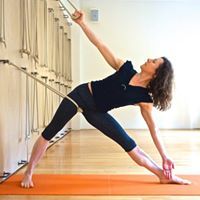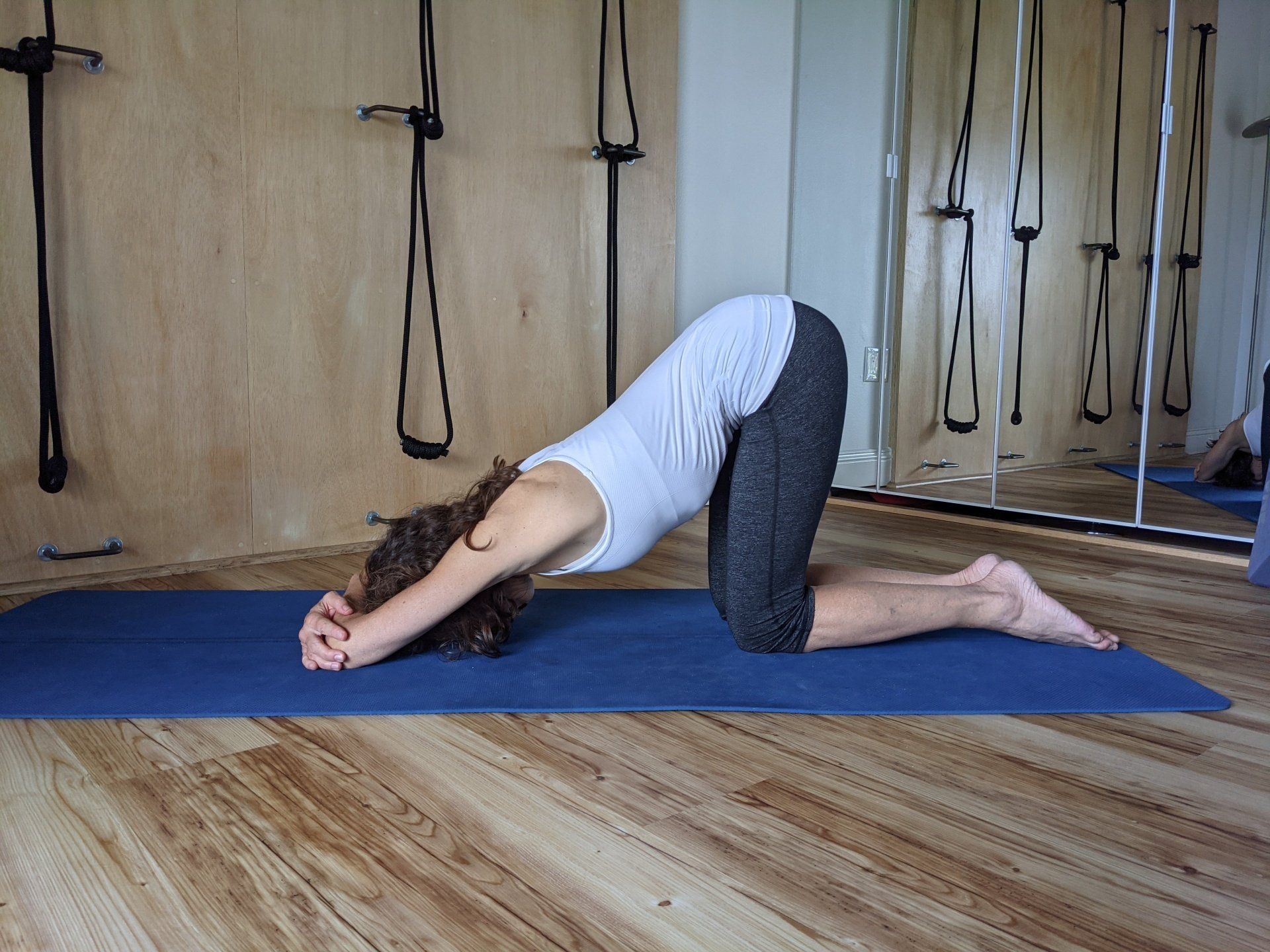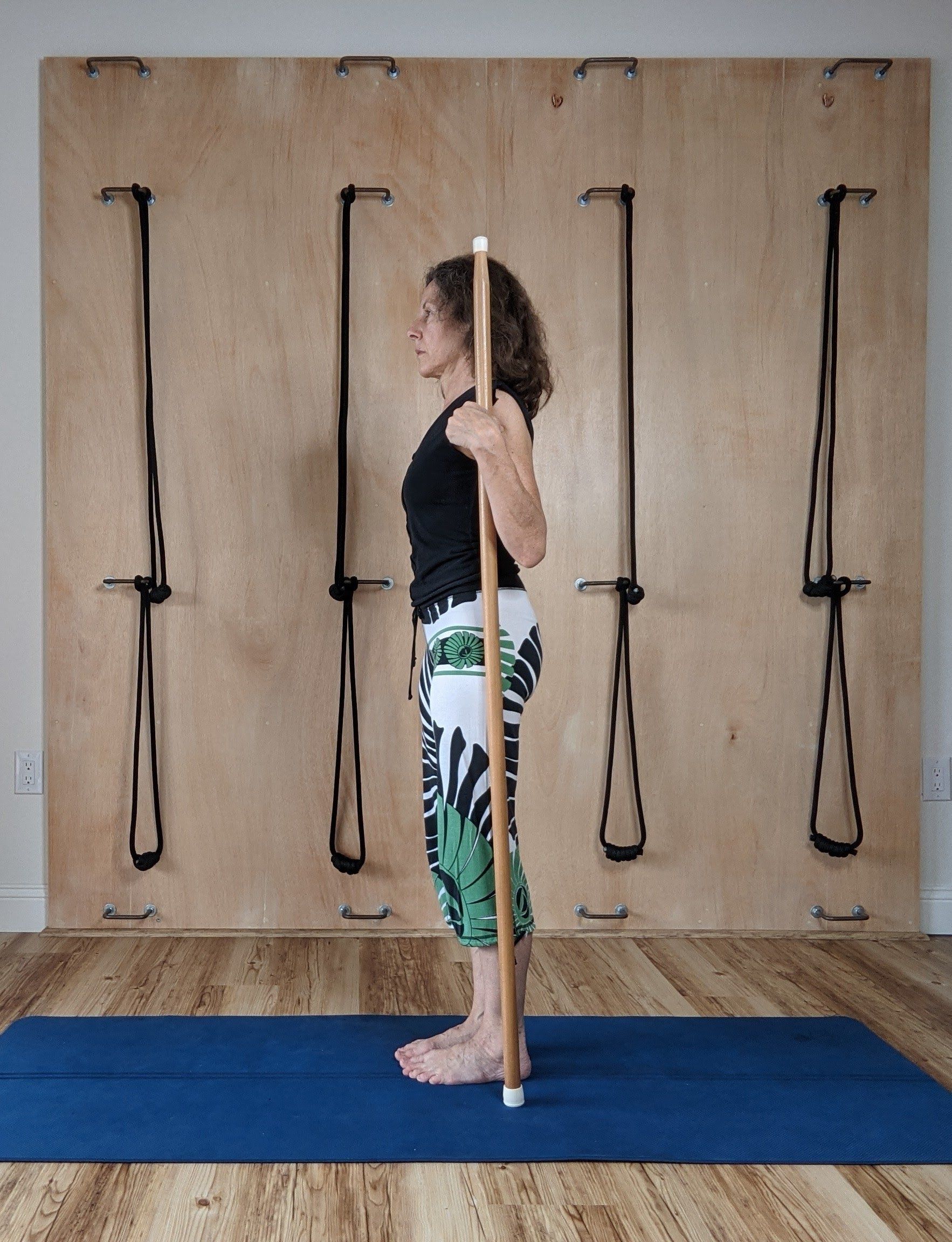Why Practice Yoga With Wall Ropes?
Jane DoCampo • April 29, 2022

Many of us share this story: We attend a yoga class or two, return with increasing regularity, and soon make room in our lives for our practice. (Some of us even organize our lives around our practice.) It's something we can't pinpoint at first, but we recognize its goodness, the way we feel after practice, and it keeps us coming back.
Yoga is endlessly fascinating, asking us to coordinate our body parts into a vast array of shapes and examine our possible resistance (physical or mental) to said shapes. There is the excitement of feeling stronger and progressing as gradually we gain understanding of opposing energetic forces, inner & outer body awareness, how our breath mobilizes the body and makes the whole practice a moving meditation.
I moved through this progression over years, eventually becoming a teacher of students of all ability levels, striving for more clarity and precision in my teaching, working to keep my students safe and aligned (and safety is a challenge for so many reasons: a student could have innate postural imbalances that aren't being properly addressed as they practice leading to injury; they may push ahead into a shape before they have all the information to proceed knowledgeably; they may be working in a way that creates instability when what everyone needs is stability, etc.).
And then I began studying with Alison West of Yoga Union, NYC and learned the Ropes! Wall ropes are an unmatchable teaching tool. They are a speed course to greater understanding, strength and refinement of the asana practice. In the hands of a skillful teacher, they retrain your body, your proprioception and correct imbalances. Ropes let you feel with great clarity the intent behind each pose and keep your body safe in increasingly deeper shapes. You feel even better after a ropes practice because you've tractioned your spine and avoided working in habitual, negative postural patterns. And when you practice out of the ropes, you take that knowledge with you for a safer, more productive practice.
For beginning and advanced practitioners, those, like myself, working with herniation or scoliosis, athletes who become imbalanced from playing a one-sided sport, or those recovering from other injuries, wall ropes are a wonderful tool to inform and work productively to improve their backs and entire bodies and stay as strong as you want to be! I see remarkable results in my students and feel limited when I'm teaching without this equipment.

Nearly any article I come across for improving back pain will invariably recommend the cat/cow exercise (a repeated arching and rounding of the spine). This is a thoughtless, rather than thoughtful addition to a sequence for back pain. Anyone providing recommendations to total strangers should only include harmless exercise with consideration of what potential serious issues can be creating back pain. While some people searching the internet for back pain relief may have no damage in their spine whatsoever, many have serious issues for which cat/cow is contraindicated and harmful such as: disc herniation; spinal stenosis; spondylolisthesis; or scoliosis. Cat/cow would aggravate and worsen each of these conditions. Moreover, when a spine is in enough distress that someone is searching for relief, often in the form of back spasms or the feeling of a pulled muscle, that spine will respond much better to stability work performed in neutral spine alignment rather than excessive motion. In fact, most likely the reason an otherwise healthy spine would be in distress, would be because of lack of awareness of neutral spine alignment as they were performing some task, exercise, or just sitting or standing in misalignment. A muscle in spasm is asking to return to its normal resting length rather than being stretched. The takeaway here is that it is much better and useful to teach neutral spine work rather than repeatedly and mindlessly including cat/cow not knowing what brought the reader to you. If you would like to learn neutral spine work, contact me at SarasotaScoliosis.com. Jane DoCampo is certified by the International Association of Yoga Therapists and is a NASM corrective exercise specialist specializing in scoliosis, herniation, and pelvic floor dysfunction.

